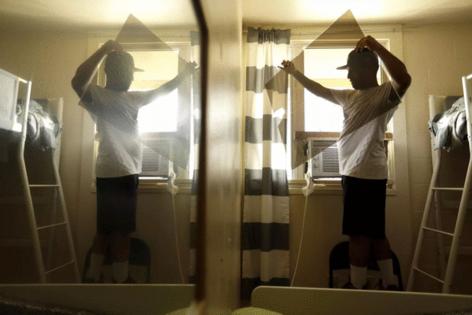Commentary: All LA rentals are to be cooled by 2032. Here's how to survive the heat until then
Published in Op Eds
Sweating inside your apartment as the temperature climbs is becoming ever more common in Los Angeles and, as extreme heat keeps intensifying, more dangerous. Last month, the Los Angeles County Board of Supervisors passed an ordinance that will require landlords to ensure the ability to maintain a temperature of 82 degrees or below in all habitable rooms by 2027 or 2032, depending on how many units the landlord owns.
This is a step in the right direction, but what else can be done? What can renters do to cope until 2032? Keeping cool often requires more than just cranking up the AC. Promising strategies include passive steps like insulation and cooling apartment units in zones.
During hot weather, Los Angeles sees increases in heat illnesses, emergency services and hospitalization rates. At the same time, the power grid during heat waves has shown its vulnerability: In 2024, more than 10,000 Southern Californians lost power during September heat waves, leaving residents — and venues such as the Hollywood Bowl — without electricity.
Multi-day heat waves, especially those with sustained overnight heat, place significant stress on grid assets. According to Southern California Edison’s 2022 vulnerability assessment, many transformers and other grid assets could fail under heat wave conditions projected to occur by 2030. Power outages during heat waves not only increase health risks but can also disrupt critical services such as hospitals and emergency response operations. But strengthening the grid to address these vulnerabilities is both challenging and costly — and not something renters can do on their own.
In a report funded by the Rand Center for Climate and Energy Futures, we used the U.S. Department of Energy’s EnergyPlus model to run more than 1,000 building energy simulations to explore the effects of different cooling strategies and requirements on indoor temperatures and electricity use across different weather conditions. This identified some simple steps that renters and property owners can take.
Extreme heat events are fundamentally different from regular hot days, leading to much higher energy use. In under-insulated homes, even running air conditioning at full capacity often cannot keep indoor temperatures below 82 degrees during extreme heat.
Passive cooling strategies, such as improved insulation and better windows, can help maintain safe indoor temperatures and reduce annual energy demand. Landlords looking to fulfill the terms of this new ordinance should investigate passive cooling strategies along with air conditioners.
One of the most effective solutions we found is reducing the cooled space, keeping one room or zone cool while allowing other parts of the house to get hot. This is a tactic residents and landlords can deploy for very low cost. It eases stress on the power grid and lowers energy bills, even during extreme conditions. When grid operators ask consumers to limit their electricity use in times of high demand via Flex Alerts, they could ask residents to reduce the area that is cooled rather than just suggesting turning up the AC.
In the ordinance, the county supervisors recognized the usefulness of zone cooling. They included language that gives landlords with 10 or fewer units until 2032 to meet the new regulations but requires that at least one habitable zone in every apartment meet the 82-degree threshold in the meantime.
The ordinance also gives renters the right to take their own steps to stay cool. As of Sept. 4, renters in any unit will be able to install their own means of cooling, such as blackout curtains or window air conditioning units, without risk of eviction.
The payoff extends far beyond an individual’s home. Even though California plans to decarbonize the grid, on the hottest days, the state often depends on a more carbon-intensive mix than during typical operations. Any reduction in electricity from using passive cooling strategies or zone cooling will reduce greenhouse gas emissions and, therefore, help curb future heat waves.
____
Sophia M. Charan is an associate engineer at Rand, where Hye Min Park is a PhD student at the School of Public Policy and an assistant policy analyst.
_____
©2025 Los Angeles Times. Visit at latimes.com. Distributed by Tribune Content Agency, LLC.
























































Comments